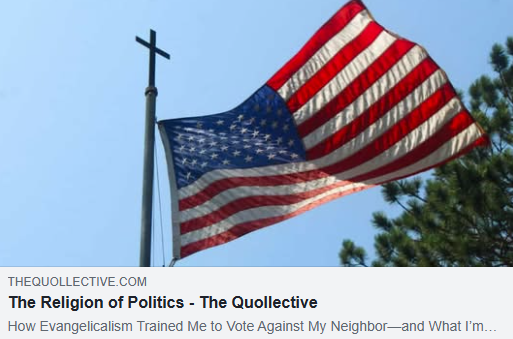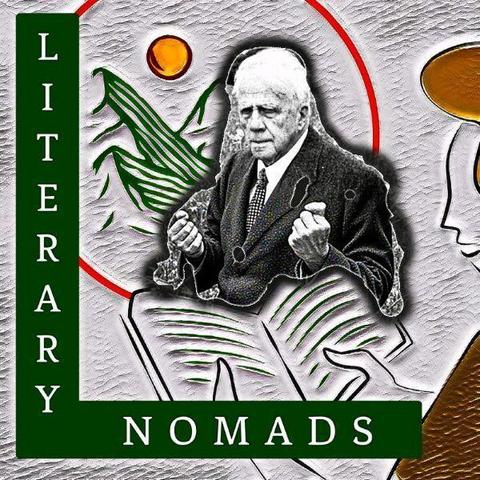#Deconstruction
Just thinking today about how deeply those who embrace the conservative (and especially evangelical) mindset are obsessed with judging someone's quality by not only the work they do, but how wealthy they are.
I had no idea when I left it all in 2016 rather than vote for an evil man that I'd be still strugging with valuing myself by what I earn 9 years later, but here we are.
#Evilgelicals #TheProsperityGospelSucks #PeopleAreMoreThanTheMoneyTheyMake #Deconstruction #ExEvangelical
You don’t feel your emotions — your emotions feel you
They’re not reactions to truth, but to imagination defending your self-image.
Realism isn’t emotional control — it’s emotional clarity.
See through the illusion.
Read “How to Stop Your Emotions Controlling You — Part 1”
👉 https://zurl.co/3uwGO
#MartinButler #Philosophy #Psychology #Deconstruction #Realism
The real #GatesOfHell #pearlygates is #deconstruction #deathbed #asilaydying #RIP.
People can put up with #deconstruction #deathbed #asilaydying #RIP but not with #Obituary #exvangelical #christianity #salvation.
#death #dust #graveyard #celebrationoflife dies when #deconstruction #deathbed #asilaydying #RIP is born.
♻️ Making it easier to recycle your house
https://techxplore.com/news/2025-10-easier-recycle-house.html
#buildings #architecture #circulareconomy #waste #recycling #database #materials #resources #construction #deconstruction
10 Reasons Church is More Business Than Belief
If you’ve ever wondered why church feels more like a brand than a body, this one’s for you. As a former pastor, I’ve seen firsthand how faith gets packaged, marketed, and monetized — from the pulpit to the payroll.
#DaranteLaMar #DLDDWorldGroup #BridgeCityGlobal #WyndowShop #MasterMind #Omniverse #Deconstruction #Atheism #Christianity #ReclaimTruth #Humanism
Thomas Boston was a Scottish, #Presbyterian church leader, says sharing with the poor should be out of your own home. God is testing us with giving opportunities. Job (31:19ff) was happy he’d been generous.
Job looked back upon his interactions with the poor as a comfort that he had been generous. Today, is there a temptation to look forward with fear that merely having the poor around us will lead to our own poverty?
How can you please God?
#christian #deconstruction
Why Most #Deconversions Happen After 25
#Reason Over #Rituals challenges the foundations of the world’s most powerful #religions — including #Christianity, #Islam, #Judaism, #Hinduism, and more. We challenge #blindfaith with #logic, history, and #criticalthinking. We expose the roots of #religion, dissect #beliefsystems, and explore what happens when reason takes the lead.
Why Did John Write His #Gospel? | What the #ChurchFathers Said
In Episode 67, Bill and Jumelle speak with Rev Heather Foy of the Ancient Celtic Church to learn a bit about her beliefs and history.
Subscribe, download and listen today! https://linktr.ee/bwabits
#Religion #Celtic #AncientCelticChurch #Exvangelical #Deconstruction #CelticChristian
In Episode 67, Bill and Jumelle hear Rev Heather Foy read from an essay she wrote about her upbringing as a conservative Evangelical Christian.
Subscribe, download and listen today! https://linktr.ee/bwabits
#SouthCarolina #SCPol #SCPolitics #ReligiousTrauma #deconstruction #evangelical #exvangelical
𝑳𝒊𝒕𝒆𝒓𝒂𝒓𝒚 𝑵𝒐𝒎𝒂𝒅𝒔: "𝑳𝒊𝒕𝒆𝒓𝒂𝒓𝒚 𝑵𝒐𝒎𝒂𝒅𝒔 𝒇𝒐𝒓 𝑻𝒆𝒂𝒄𝒉𝒆𝒓𝒔" -
What is this podcast, anyway? I recommend you start here, with this intro to Literary Nomads and get a taste of what the larger series offers! (Oh, and we talk about--still talking about!--"The Road Not Taken")
https://waywordsstudio.com/podcasts/waywords_podcast/literary-nomads-for-teachers/
#podcast #literature #books #waywordsstudio #readers #brucehornsby #deconstruction #juliakristeva #uncertainty #teaching #teachers #education #elaeducation #elateachers
Seems a little odd to me that (according to wikipedia) at least 7 relatively known artists have released albums called 'deconstruction'
Its almost like its a thing or something
WISDOM FROM THE COOLEST CULT EXPERT @KnittingCultLady #maga #trump #deconstruction #coercion #cult - YouTube




